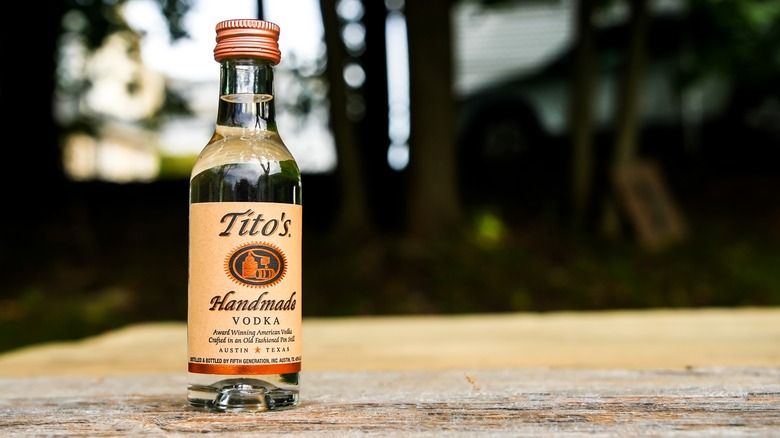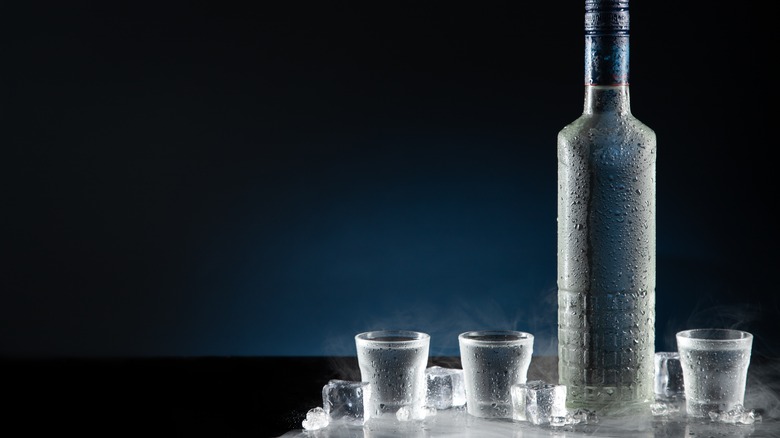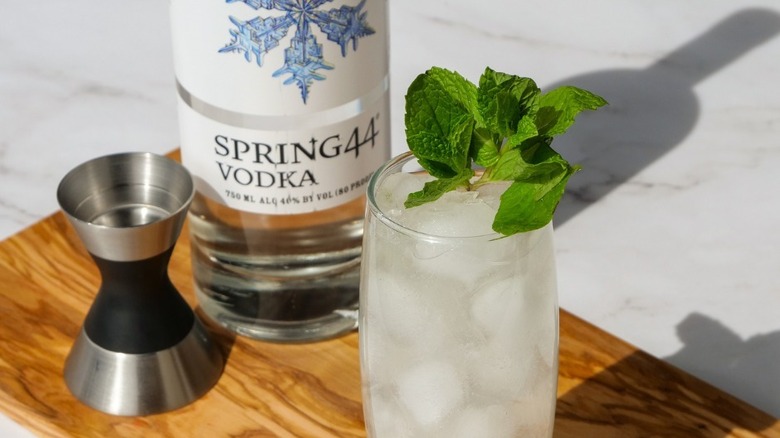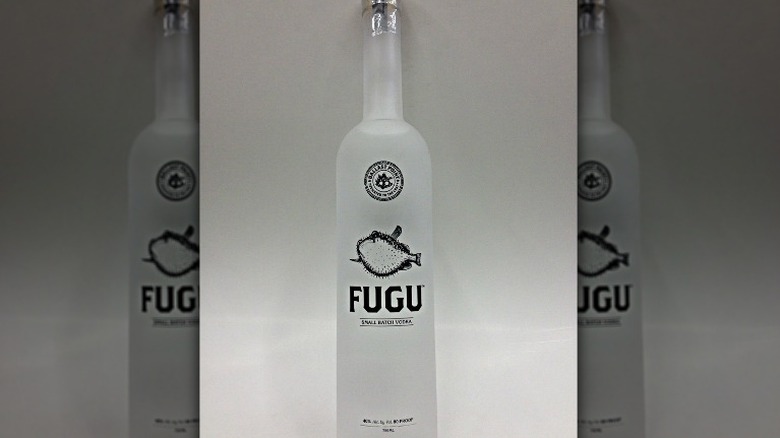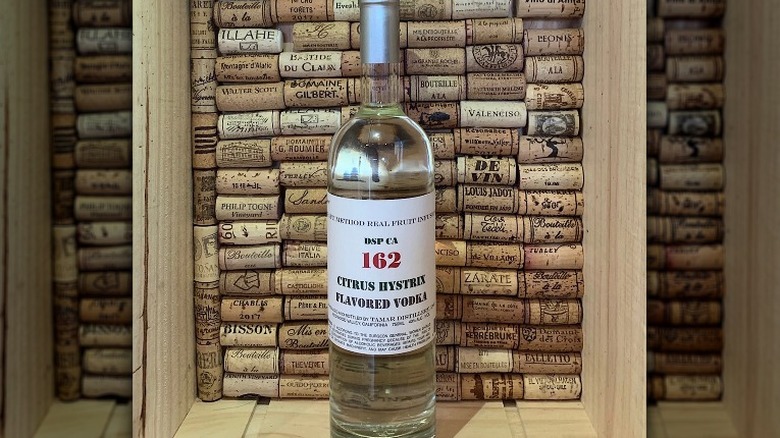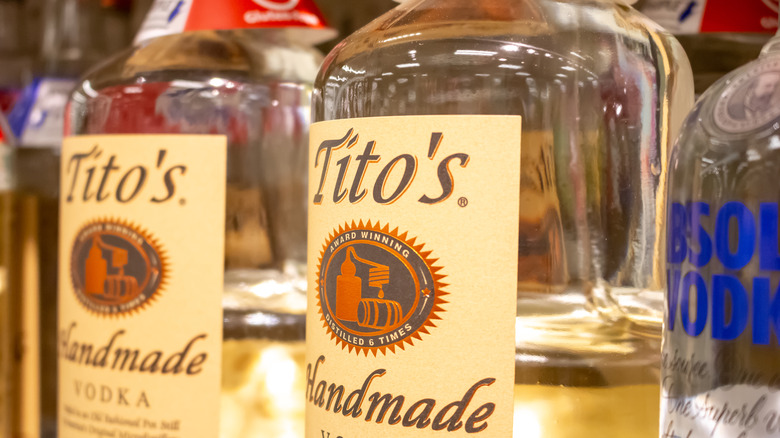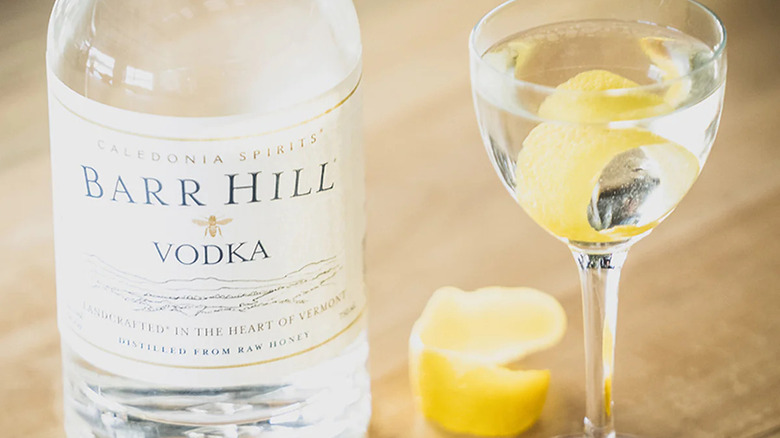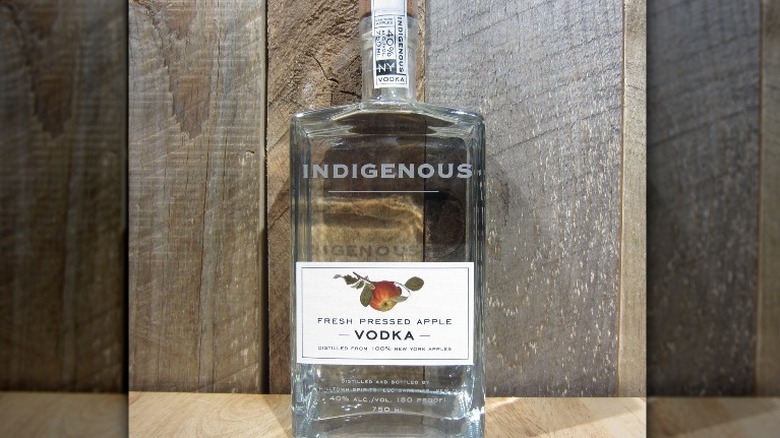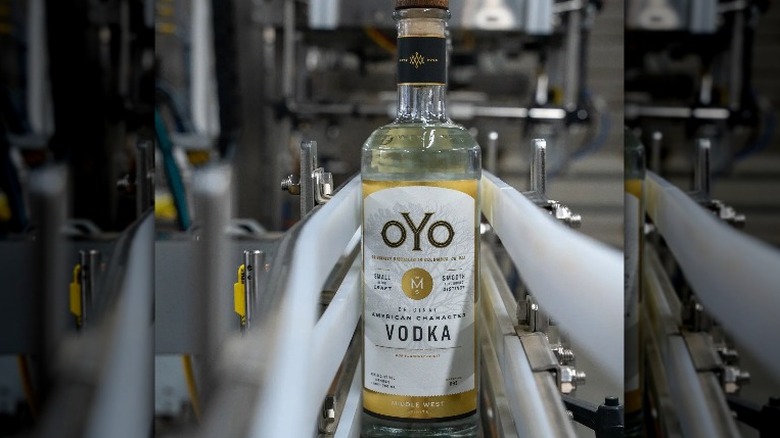The Best American Vodkas, Ranked
Contributor Chad Walsh writes about wine and other beverages frequently for Food Republic. He is the former beverage manager for the Dutch in New York City and is currently working on the opening of Agern, Danish chef Claus Meyer's planned restaurant in Manhattan's Grand Central Terminal.
Most people probably associate vodka with Russia and other territories of the former Soviet Union, the spirit's ancestral home, or perhaps Sweden or France. But there is a surprisingly high number of good vodkas being made right here, right now in the United States.
Since the 1950s, the U.S. has been a huge consumer of vodka, so much so that Smirnoff long ago realized it would be cheaper to manufacture its product here rather than in Mother Russia. But that's not the kind of American vodka we're talking about. No, we're referring to the burgeoning crowd of small, independent American distilleries that have produced so much diversity in the category that there are easily 500 domestic vodkas on the market today.
It would be difficult to try them all, especially when you consider all the various flavored options now available. For now, let's stick to plain expressions. Here are our favorite American vodkas, ranked.
9. Hangar One
When I first tasted Hangar One, it completely blew my mind. Grey Goose and Belvedere had brought a full-flavored style (think fewer nail-polish remover and antiseptic notes), and it wasn't the fact that it was American that intrigued me — it was the bright aromatic qualities that resulted from using grapes for a portion of the base distillate. It was neutral enough that it wouldn't shock someone who's used to one of the classic Russian or Polish brands, but the floral notes elevated cocktails that were usually made with those old-school guys (keep in mind that the cosmopolitan era was in full swing). The citron, made with Buddha's Hand, a citrus with very little juice but tons of flavorful oil, was a revelation.
There was an experimental bent to the original brand: They weren't afraid to try a short run of wasabi or spicy-pear expressions. Since the label's purchase by a company created by the people behind Jose Cuervo tequila, however, things have been a bit more status quo. The basic "blue label" Hangar One is still a great vodka, but whether the recipe has been adjusted, or it's just that it is now up against a much larger field of compelling vodkas, the spirit is in that liminal stage between cool-kid brand and OG standby.
8. Material
Perhaps the "coolest-kid" brand out there these days is Material, which you would basically have to go to Art Basel (or a similar art-world scenester) or one of a handful of NYC's ultra-hip restaurants to try. The spirit is made in the marijuana-growing mecca of Humboldt County using a process described as "virgin coconut carbon filtration." Whatever that means, the end result is pretty innocuous, but the cleanliness factor is more pleasant than medicinal.
Why pick one neutral spirit over another? A portion of the proceeds from each bottle goes to supporting artists directly with grants, and it's packaged in a cool clear bottle with an eye-catching graphic treatment of the brand's name.
7. Spring 44
Based on the often overlooked main ingredient in any spirit — water — Spring 44 set up shop in Colorado, near a spring owned by the father of one of the founders. The vodka is based on three grains (wheat, rye, and corn) and then blended with water from the nearby artesian well. There's more nuance here, and some of that vanilla-like sweetness that makes Belvedere so delicious. But you can't help but be struck by the purity and silky mouthfeel that springwater, as opposed to what is typically distilled or otherwise purified water in other brands, brings to Spring 44.
6. Ballast Point (Fugu Vodka)
Long a leader in the Southern California microbrewery scene, Ballast Point made its name with full-flavored ales, like the Sculpin IPA, so much so that it was recently acquired by beverage conglomerate Constellation Brands for $1 billion. Part of the appeal, surely, was the company's expertise in distillation, a natural progression from brewing (since the first step in making a grain spirit is to essentially brew a beer, known as the mash). Ballast Point fired up its still back in 2008, and the company now makes a number of different products, including a cleverly canned gin and tonic.
One of the original products was the Fugu vodka, named after the poisonous blowfish sought after by sushi lovers. Although made from a mixture of different grains, the corn in the mash provides a distinct sweetness that balances out the palate nicely, while still finishing super-clean. It's a great martini vodka, if that's your cocktail of choice.
5. Vodka DSP CA 162
When Ansley Cole (and his partner, Jörg Rupf) sold Hangar One in 2010, he signed a noncompete, which forbade him, or any of the brands under his Craft Distillers umbrella, from producing vodka. That mandate eventually expired, and in 2014, Cole and distilling partner Crispin Cain released their first bottle of the somewhat clumsily named Vodka DSP CA 162. An homage to the brandy still at Craft's Germain-Robin, where Cain learned to distill, the name is the license number that was given to it in 1982. This is significant because it was among the first in California since Prohibition.
Like the original Hangar One, the straight vodka is a blend of a wheat spirit with distilled aromatics grapes (Viognier, again, as well as Riesling). The floral qualities really pop here, and it would be a shame to add olive brine to such a flavorful vodka. It can bring lift and complexity to shaken drinks like gimlets. But if you're going to drink it straight, garnish with a twist instead of olives.
Cole's company also might be turning out some of the best flavored vodkas on the market. While some might be turned off by the varietals' unorthodox names, usually referencing the ingredients — e.g. "Citrus Reticulata var. Sunshine" for the orange flavor — trust me: Go for it anyway.
4. Tito's
Perhaps the biggest success story in all of American vodka is that of Tito Beveridge, who despite his perfect name for the craft, took a circuitous route to distillation. A big Texan personality, Beveridge got his start in oil and gas exploration, eventually ending up in the mortgage business in Austin. It was a bit of a quixotic pursuit at first, as Beveridge had no experience in any aspect of the business, and starting the first distillery in Texas since Prohibition wasn't going to be easy. He did it, though, and his corn-based (which, although it's generally agreed that distillation removes any gluten from grain, is very on trend in this anti-wheat age) vodka went on to win Double Gold and was named a unanimous favorite at the San Francisco Spirits Competition in 2001.
Besides being a good, smooth vodka for almost any style of cocktail, there is something about the down-home way the brand has been marketed that is just irresistible. The Tito's team, unlike the slickly suited representatives of the major brands, might be flipping burgers on the grill next to an open bar at a charity event, or popping up with a photo booth in your local bar. Tito himself has been known to just pop in and hang out at the bar, and it definitely helps that his is one of the most affordable bottles of vodka on the shelf.
3. Caledonia Spirits, Barr Hill Vodka
As great as Tito's may be, it still relies on the traditional process of distilling vodka many times (six), which strips away flavor. Although the idea that vodka should be as neutral as possible is still the prevailing attitude, some of the most exciting products on the market aren't afraid to let their ingredients show. And although it's one of the most expensive bottles on the list, Barr Hill's is a gorgeous spirit, even if it doesn't fit into the classic idea of what vodka is.
Started by longtime beekeeper Todd Hardie in Hardwick, Vermont — partly to revive his ancestral Scottish distilling tradition while also providing a new outlet for his honey — Caledonia Spirits is turning out a variety of spirits, including an excellent gin. The base for this vodka is pure honey, of which it takes several pounds to produce one bottle. After a slow, cold fermentation, it's passed through a column still and then blended with water to get it to the standard 80 proof (40 percent alcohol).
Although the aroma and mouthfeel of the honey are unmistakable, the vodka isn't sweet per se. Stir it over ice and strain into a chilled coupe with a lemon twist, and you won't have to do much else; it is simply one of the most enjoyable vodkas on the market.
2. Tuthilltown Distillery, Indigenous Apple
Tuthilltown made its initial splash on the spirits scene with its tiny bottles of specialty whiskey, made exclusively from New York grains on the site of a 200-year-old mill and known as the Hudson brand. Under the Tuthilltown label, however, there are a number of other spirits, including the Indigenous line of vodkas made from local ingredients. The grain example is delicious, but the apple is truly extraordinary.
This is not an apple-flavored vodka by any means. Cider is made from an orchard a mere five miles away from the distillery, and is then distilled in small batches on a copper pot still. The resulting spirit is more neutral than, say, an apple brandy or eau de vie, but still maintains the beautifully subtle essence of the fruit. Although it is delicious out of the bottle over ice, it can be used in any number of citrus cocktails and makes a damn good Moscow Mule. (Or Hudson Mule?)
1. Middle West Distillery, OYO
As good as the previously mentioned vodkas that use nontraditional bases might be, there is something about a great vodka made the traditional way: with grain. OYO (pronounced oh-why-oh) is made specifically from organically grown Ohio soft red winter wheat. Like the famed Dankowskie rye of Poland, which Belvedere and others love to feature prominently in their marketing materials, this wheat is special, and using only a single type of grain allows its individual characteristics to be more easily appreciated.
Neat in a glass, it's clear from its viscosity that OYO is different from the thin stuff you find in your bartender's well. And that's because, unlike most "premium" vodka, it's only distilled once. Without getting too technical, Middle West bought a very special Kothe "vodka" still, which allows the distillers to get the spirit to 190 proof in a single pass and blend the proof down before bottling. The nose is a subtle mix of vanilla, brioche, and spiciness. It is the most singularly interesting vodka I have ever tasted that is true to its grain-only roots, and it makes a fine bone-dry martini — just think about putting vermouth in as you make it, and that will be enough. Feel free to go Gibson style and garnish with cocktail onions; this vodka can handle it.

